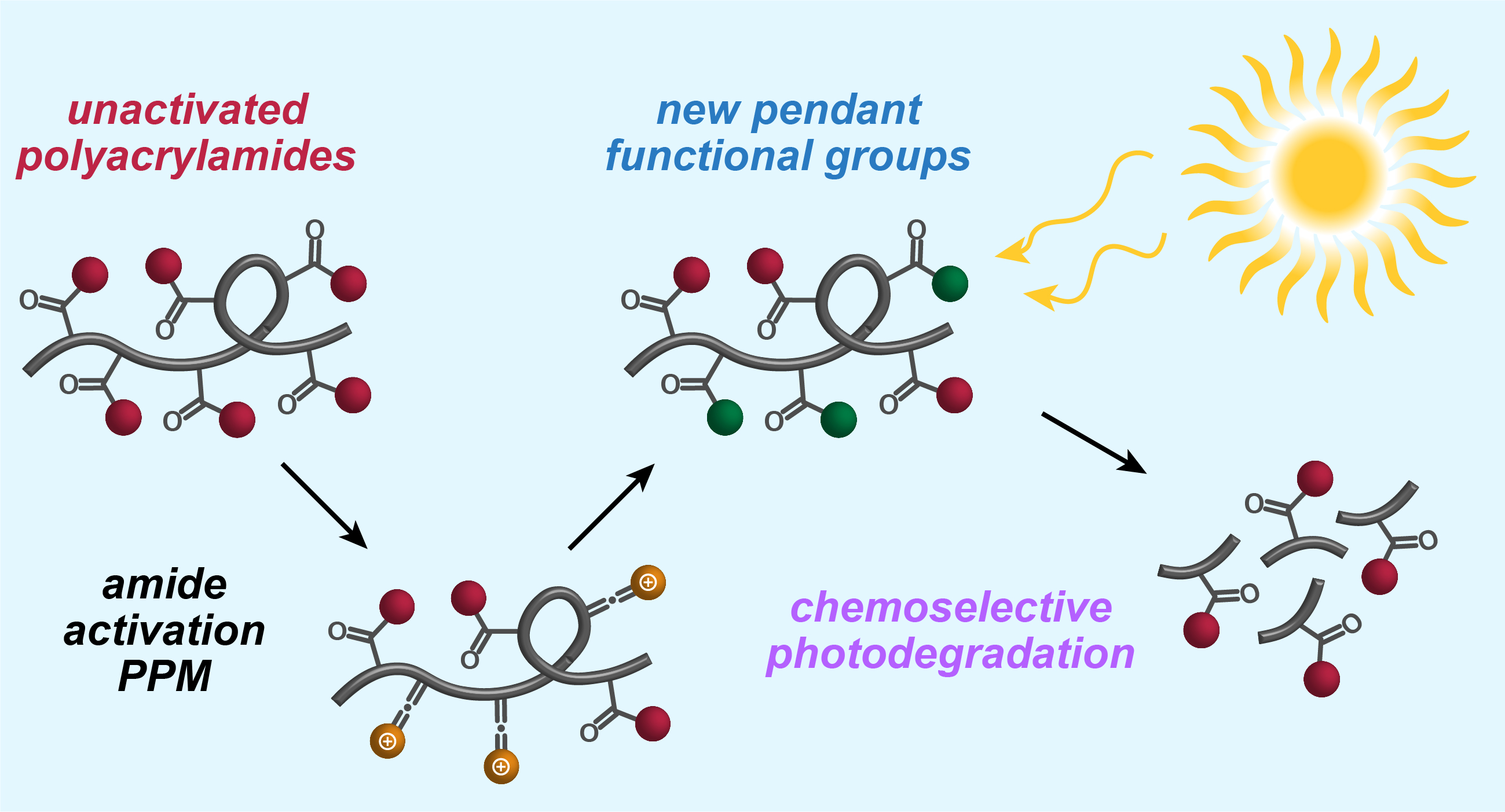Assistant Professor Aaron Teator named June 2025 Sutton Family Research Impact Award recipient

The Department of Chemistry congratulates Assistant Professor Aaron Teator on receiving the June 2025 Sutton Family Research Impact Award!
The Sutton Award is a monthly competition among chemistry faculty. Every month, the Chemistry Department Chair and Associate Chairs review the peer-reviewed papers published by chemistry faculty from the three previous months to select a winner. The recipient receives a $500 cash prize and is featured on the departmental website.
For a full list of winners, visit our Sutton Family Research Impact Award webpage.
Keteniminium-Mediated Postpolymerization Modification: Unlocking Emergent Properties in Polyacrylamides
By Kasun Wekasinghe, Stephanie A. Castillo, Jaina R. Bemis, and Aaron J. Teator
Published in J. Am. Chem. Soc. 2025, 147, 21302-21307. https://doi.org/10.1021/jacs.5c04964
Polyacrylamides are a widely-used synthetic polymer found everywhere from biomedical materials to water treatment plants, but their chemical stability makes it difficult to modify their properties post-synthesis. Traditional methods for adding new functionality to these materials require preparing the polymers using specialized building blocks or subsequent reactions involving harsh conditions, limiting their overall utility. In this work, the Teator group developed a new post-polymerization modification platform that allows for the direct transformation of simple polyacrylamides into specialized, functional materials using a specific type of reactive intermediate called a keteniminium ion. This intermediate is the key to modifying the properties of the polyacrylamides, as it turns a historically non-reactive group (an amide) into one capable of many different chemical reactions.
By treating standard polyacrylamides with an activating reagent (trifluoromethanesulfonic anhydride), the team was able to temporarily “unlock” specific sites on the polymer chain, which could then be transformed to a wide range of new functional groups. This approach enabled the preparation of copolymers containing both dialkyl amide units and aryl ketone units randomly interspersed throughout the polymer chain, which would likely not be possible to synthesize in an alternative way. In addition, the incorporation of aryl ketone units added a new property in the polymers: the ability to break the polymer chain precisely at these new sites. The otherwise nondegradable starting polymers could now be broken down when exposed to ultraviolet light, including natural sunlight. This study not only provides a powerful new method for post-polymerization modification but also highlights how chemical activation strategies can be leveraged to generate new synthetic materials with desirable properties from common, everyday polymers.
